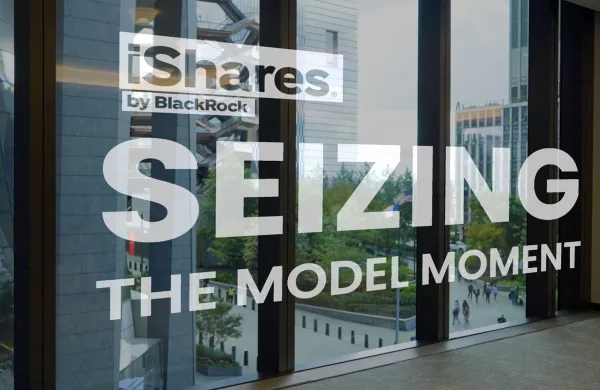It's no secret that traditional risk-management models failed to help investors anticipate the meltdowns of Lehman Brothers Holdings or Bernard Madoff’s ponzi investment scheme. What’s less certain is what will replace those models.
Vying for that honor are a number of new software systems that use stress testing based on various hard-to-predict scenarios and throw in some additional bells and whistles. Once the exclusive realm of the largest and most sophisticated fund-of-funds managers, like Blackstone Alternative Asset Management and UBS, the technology driving risk analytics has become commoditized, with off-the-shelf software packages widely available to investors of all sizes. Companies such as HedgeMark Risk Analytics, Imagine Software, Inalytics, Investor Analytics and PerTrac now all sell versions of such risk mitigation software, giving any investor the chance to assess exactly how its assets would react to extraordinary events.
In contrast, the formerly reigning traditional model, known as Value at Risk or VaR for short, relies on historical price data to construct a distribution of probable outcomes for a portfolio.
“You’re using historical data to estimate what correlations will be between prices and volatility,” says Lance Smith, CEO of New York City–based Imagine Software. “That results in a probable distribution of probable outcomes.”
But an inherent problem with VaR is how to estimate correlations between the historical prices of financial instruments and actual volatility in the market. In the world of statistics, this is known as the “fat tail” problem, which refers to the fact that the tail ends of the curve of distribution of probable outcomes in finance are wider than in normal distributions.
In the months leading up to the collapse of Lehman, for example, the Wall Street firm was reporting VaR analyses every quarter that yielded potential losses in the hundreds of millions of dollars. “Yet Lehman lost $40 billion in September of 2008,” says Rick Di Mascio, CEO and founder of London-based Inalytics. “How can that have been the case?” Yet he points out that some investment firms “just continue carrying on using VaR and believing it.”
Stress testing on the other hand lets investors gauge the resilience of even the most unexpected set of risks in a portfolio. These days it’s not uncommon for the technology of risk analytics to test scenarios that have a standard deviation of as much as eight or nine. (Anyone who’s ever suffered through a statistics class knows that standard deviation is a measure of the distance from the statistical mean.) An event with a standard deviation of eight or nine falls near the very tip of the long tail, meaning its projected to happen once every 10 million years.
But traditional stress testing is also being rethought. One such system, known as Monte Carlo simulation, allows an investor to test multiple scenarios with a host of random variables, not unlike those in the casinos in the glitzy Mediterranean port for which it’s named.
Yet this approach also has its flaws. “If you run a Monte Carlo simulation to test returns, you’re going to find out that you face a 70 percent chance of loss,” observes Kenneth Phillips, the founder of HedgeMark. “But you won’t have any idea of the circumstances that lead to that loss.”
So in 2009, Phillips launched HedgeMark, the result of more than three years of research and development by a team of 30 analysts and computer engineers. The idea was to take risk analytics to the next level by providing granular data about markets, industries, sectors and geopolitics to the investor at both an aggregate and an individual level.
With the help of Bank of New York Mellon, which offered fund analytics, Phillips designed HedgeMark’s compliance and surveillance modules so that users have the flexibility to define their own risk exposures and concentration limits. More important, he designed the software to analyze what circumstances would lead to a loss. “If you have software that tells you there’s a 10 percent chance that you’ll lose 50 percent of your portfolio’s value, you need to know what types of external events could lead to that 50 percent drop,” Phillips explains. “Otherwise you don’t know how to mitigate the threat and hedge it out properly.”
“Transparency can be a very powerful tool in the hands of a knowledgeable, talented person,” he says.
But even the most sophisticated models may not be enough for alternative asset managers. Consider the fact that hedge fund managers often use multiple prime broker accounts to conduct different types of transactions, simply to prevent all their eggs from being contained in any one basket. As a result of this, however, fund administrators are often the only entity that gets a full perspective of a fund’s holdings. Enter G2 FinTech, a software system that keeps track of when funds get in and out of certain positions and how those moves affect the fund.
The system has the additional advantage of helping asset managers comply with the tax law, says George Michaels, chief executive officer of G2 FinTech. Suppose, for example, a fund manager buys a put option with one broker and a call option with another. In that scenario, only the fund administrator sees the two positions and knows that the manager is using the straddle as a strategy to structure debt — not to evade taxes. (A 1981 law that changed how futures are traded and accounted for can get funds into trouble with the IRS.)
In the case of G2 FinTech, its software scans the sales of a hedge fund to make sure a manager hasn’t accidently made an inappropriate straddle. “Doing accounting for hedge funds isn’t easy or cheap,” says Michaels. And he notes that failing to do it is risky. “The mutual fund industry has been standardized for quite some time,” says Michaels. “But the hedge fund industry isn’t as mature. A fund can really be caught with its pants down if it faces an audit.”
The latest tools also help investors try to determine when to get in and out. New York–based PerTrac, which dates back to 1996, making it one of the industry’s oldest hedge fund analytics firms, offers clients more than 900 performance-based statistics, from simple monthly return streams to templates that chart compound rates of return, standard deviation and Sharpe ratios. That means the software can be customized to meet specific customer requirements. “We’re all about helping the investor understand what his portfolio would look like in a fat-tail world,” says Lisa Corvese, PerTrac’s head of global business strategy.





